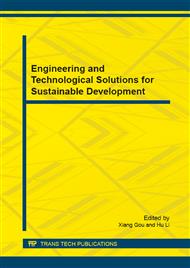p.163
p.169
p.173
p.181
p.187
p.193
p.200
p.205
p.211
Numerical Study on Supersonic Combustor with an Allotype Cavity
Abstract:
The three-dimensional coupled explicit Reynolds Averaged Navier–Stokes (RANS) equations and the two equation shear-stress transport k-w (SST k-w) model has been employed to numerically simulate the cold flow field in a special-shaped cavity-based supersonic combustor. In a cross-section shaped rectangular, hypersonic inlet with airflow at Mach 2.0 chamber, shock structures and flow characteristics of a herringbone-shaped boss and a herringbone-shaped cavity models were discussed, respectively. The results indicate: Firstly, according to the similarities of bevel-cutting shock characteristics between the boss case and the cavity case, the boss structure can serve as an ideal alternative model for shear-layer. Secondly, the eddies within cavity are composed of herringbone-spanwise vortexes, columnar vortices in the front and main-spanwise vortexes in the rear, featuring tilting, twisting and stretching. Thirdly, the simulated bottom-flow of cavity is in good agreement with experimental result, while the reverse flow-entrainment resulting from herringbone geometry and pressure gradient. However, the herringbone-shaped cavity has a better performance in fuel-mixing.
Info:
Periodical:
Pages:
187-192
Citation:
Online since:
November 2014
Authors:
Price:
Сopyright:
© 2014 Trans Tech Publications Ltd. All Rights Reserved
Share:
Citation:


